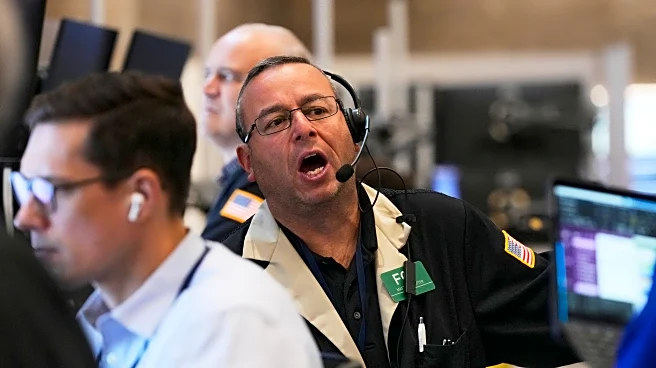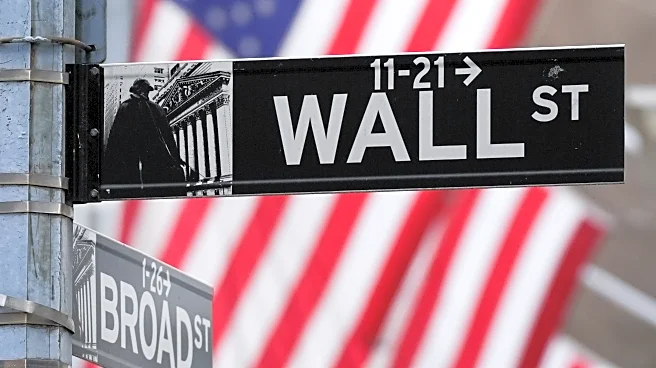What's Happening?
Gold prices are hovering near an all-time high, driven by expectations of a U.S. interest rate cut and upcoming inflation data. Spot gold increased by 0.8% to $3,655.77 per ounce, following a record high of $3,673.95. U.S. gold futures for December delivery also rose. The anticipation of a rate cut is supported by signs of a cooling U.S. labor market, which has weakened the dollar. Recent revisions in U.S. job growth data have added to economic uncertainty, reinforcing gold's role as a safe-haven asset. Market participants are closely watching U.S. producer and consumer price inflation data for further insights into the Federal Reserve's monetary policy.
Why It's Important?
The surge in gold prices reflects broader economic uncertainties and the potential impact of U.S. monetary policy changes. A rate cut could further weaken the dollar, making gold more attractive as a non-yielding asset. The increase in gold prices, which have gained 39% this year, highlights the metal's appeal amid global economic instability and dovish monetary settings. Investors and central banks are accumulating gold as a hedge against inflation and currency fluctuations, indicating a shift in investment strategies towards safer assets.
What's Next?
The upcoming U.S. inflation data will be pivotal in determining the Federal Reserve's interest rate trajectory. A rate cut could bolster gold prices further, potentially reaching ANZ Group's forecast of $3,800 per ounce by year-end and peaking near $4,000 by next June. The market is pricing in a high probability of a rate cut, which could influence investment flows into gold and other precious metals. The ongoing economic uncertainty and geopolitical tensions may continue to drive demand for gold as a safe-haven asset.












